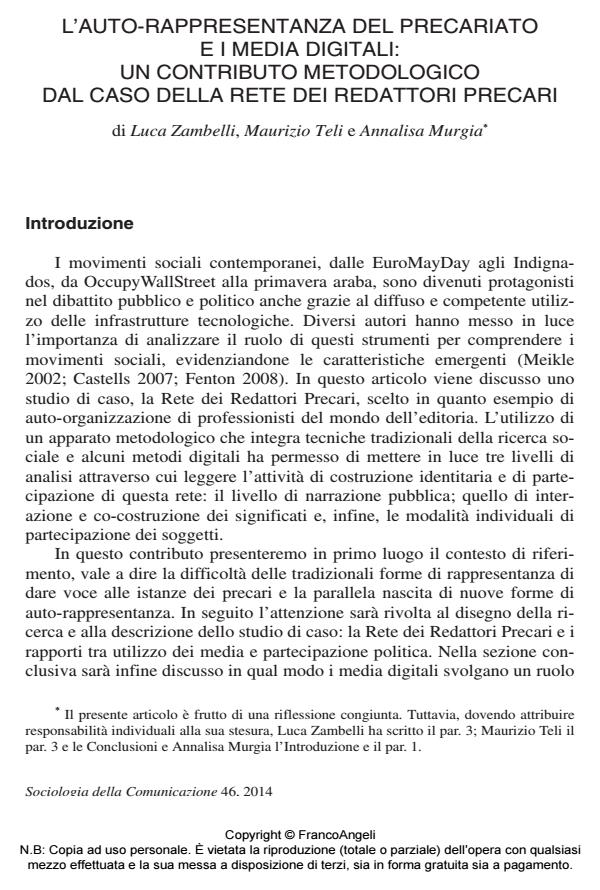Self-presentation of Precariousness and Social Media: A Methodological Contribution from the Re.Re.Pre. Case: The Network of Precarious Editors
Journal title SOCIOLOGIA DELLA COMUNICAZIONE
Author/s Luca Zambelli, Maurizio Teli, Annalisa Murgia
Publishing Year 2014 Issue 2013/46
Language Italian Pages 18 P. 113-130 File size 1091 KB
DOI 10.3280/SC2013-046008
DOI is like a bar code for intellectual property: to have more infomation
click here
Below, you can see the article first page
If you want to buy this article in PDF format, you can do it, following the instructions to buy download credits

FrancoAngeli is member of Publishers International Linking Association, Inc (PILA), a not-for-profit association which run the CrossRef service enabling links to and from online scholarly content.
The diffusion of fixed-term contracts, also among knowledge workers, has been sided by the weakening of trade-unions and by the parallel emergence of new forms of self-representation. In this article we present a case study, the Rete dei Redattori Precari, that lets us inquire how social media participate to practices of self-representation. Combining traditional and digital research methods and techniques, three levels of Re.Re.Pre.’s identity construction have emerged: the public self-representation; the co-construction of meanings and the forms of individual participation. The article discusses, in particular, the methodological implications for the study of mobilization of traditionally unrepresented subjects.
Keywords: Self-representation, network, precariousness, social media, digital methods, cyberethnography
Luca Zambelli, Maurizio Teli, Annalisa Murgia, L’auto-rappresentanza del precariato e i media digitali: un contributo metodologico dal caso della rete dei redattori precari in "SOCIOLOGIA DELLA COMUNICAZIONE " 46/2013, pp 113-130, DOI: 10.3280/SC2013-046008